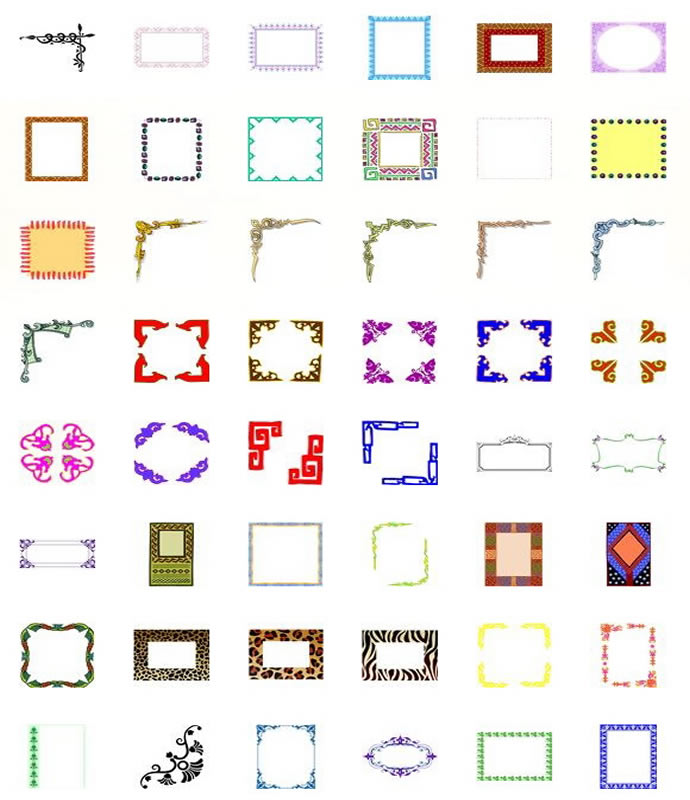FREE CLIP ART BORDERS AND BUSINESS CLIPARTS FOR DOWNLOAD
Electronic clip art is available in several different file formats. It is important for clip art users to understand the differences between file formats so that they can use an appropriate image file and get the resolution and detail results they need. Clip art file formats are divided into 2 different types: bitmap or vector graphics. Because of their fixed resolution, printing bitmap images can easily produce grainy, jaggy, or blurry results if the resolution is not ideally suited to the printer resolution. In addition, bitmap images become grainy when they are scaled larger than their intended resolution. A few bitmap file formats (such as Apple's PICT format) support alpha channels, which allow bitmap images to have transparent backgrounds or an image selection which uses antialiasing. Most common web-based file formats such as GIF, JPEG, and PNG are bitmap file formats. The GIF file format is one of the simplest, low-resolution bitmap file formats, only supporting 256 colors per image. As a result, however, GIF files can be extremely small in file size. Other common bitmap file formats are BMP (Windows bitmap), TGA, and TIFF. Most clip art is provided in a low resolution, bitmap file format which is unsuitable for scaling, transparent backgrounds, or good-quality printed materials. However, bitmap file formats are ideal for photos, especially when combined with lossy data compression algorithms such as those available for JPEG files. Bitmap (or "rasterized") file formats are used to describe rectangular images made up of a grid of multicolored or black and white pixels. Scanned photos, for example, make use of a bitmap file format. Bitmap images are always limited in quality by their resolution, which must be fixed at the time the file is created. If the image is not rectangular, then it is saved on a default background color (usually white) defined by the smallest bounding rectangle in which the image fits. In contrast to the grid format of bitmap images, Vector graphics file formats use geometric modeling to describe an image as a series of points, lines, curves, and polygons. Because the image is described using geometric data instead of fixed pixels, the image can be scaled to any size while retaining "resolution independence", meaning that the image can be printed at the highest resolution a printer supports, resulting in a clear, crisp image. Vector file formats are usually superior in resolution and ease of editing as compared to bitmap file formats, but are not as widely supported by software and are not well-suited for storing pixel-specific data such as scanned photographs. In the early years of electronic clip art, vector illustrations were limited to simple line art representations. However, by the early 2000s, vector illustration tools could produce virtually the same illustrations as bitmap illustration tools, while still providing all of the advantages of vector file formats. The most common vector file format is Adobe's EPS (Encapsulated PostScript) file format. Microsoft has a much simpler, less sophisticated vector file format called WMF (Windows Metafile). The World Wide Web Consortium has developed a new, XML-based vector file format called SVG (Scalable Vector Graphics) which may be supported by all web browsers in the future (Firefox and Opera currently support the format). For those with image-editing experience or interest to work with vector file formats, vector clip art provides the most flexible, highest quality images. |
|



